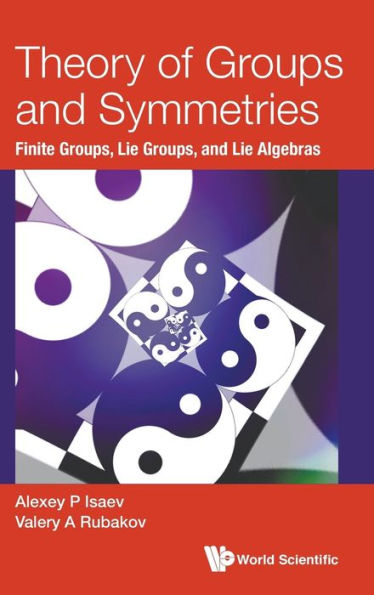Table of Contents
Preface xiii
1 Groups and Transformations 1
1.1 Groups: Basic Concepts and Definitions 1
1.1.1 Group and subgroup. Examples 1
1.1.2 Normal subgroups, cosets, quotient (factor) groups 12
1.1.3 Direct products of groups, conjugacy classes, center 16
1.1.4 Example. Group of permutations (symmetric group) Sn 18
1.2 Matrix Groups. Linear, Unitary, Orthogonal and Symplectic Groups 26
1.2.1 Vector spaces and algebras 26
1.2.2 Matrices. Determinant and Pfaffian, direct product 28
1.2.3 Linear operators and matrix groups. Groups of linear transformations GL and SL 34
1.2.4 Matrix groups associated with bilinear and Hermitian forms 37
1.2.5 Matrix groups of types O, Sp and U 41
1.3 Homomorphisms 47
1.3.1 Mapping 47
1.3.2 Group homomorphism. Kernel and image 48
1.3.3 Exact sequence 52
1.4 Groups of Transformations. Conformal Group 54
1.4.1 Groups of transformations. Linear inhomogeneous groups 54
1.4.2 Semidirect product of groups 58
1.4.3 Conformal group Conf(Rp,q) 61
2 Lie Groups 67
2.1 Manifolds and Lie Groups 67
2.1.1 Smooth manifolds 67
2.1.2 Lie group manifolds. Examples 74
2.1.3 Manifold of conformal group Conf(Rp,q). Isomorphism of Conf(Rp,q) and O(p + 1, q + 1) 82
2.1.4 Compact Lie groups 86
2.2 Tangent Spaces. Haar Measure 89
2.2.1 Tangent spaces of smooth manifolds 89
2.2.2 Invariant metric on Lie group. Haar measure 95
3 Lie Algebras 103
3.1 Matrix Lie Algebras 103
3.1.1 Tangent spaces to manifolds of matrix Lie groups 103
3.1.2 Matrix Lie groups and matrix Lie algebras 105
3.1.3 Examples of matrix Lie algebras 107
3.1.4 Tangent spaces of matrix Lie group manifolds (continued) 116
3.2 General Construction 117
3.2.1 General definition of Lie algebra. Homomorphisms of Lie algebras and exponential mapping A(G) → G 117
3.2.2 Structure constants. Simple and semisimple Lie algebras, direct sum of Lie algebras 125
3.2.3 Realifications and real forms of complex Lie algebras 129
3.2.4 Killing metric in Lie algebra. Cartan's criterion for semisimplicity 136
3.3 Lie Algebras of Classical Series 138
3.3.1 Examples of defining commutation relations of some Lie algebras 138
3.3.2 Real forms of Lie algebras sl(n, C), so(n, C) and sp(2r, C) 150
3.3.3 Examples of isomorphisms and automorphisms of Lie algebras. "Accidental" isomorphisms 151
3.4 Lie Algebra of Conformal Group Conf(Rp,q) 162
3.4.1 Conformal algebra in more than 2 dimensions 162
3.4.2 Digression. Isometries and conformal isometries of manifolds, Killing vectors and Liouville theorem 163
3.4.3 Isomorphism conf(Rp,q) = so(p + 1, q + 1), for p + q > 2 170
3.5 Locally Isomorphic Lie Groups. Universal Covering 172
4 Representations of Groups and Lie Algebras 179
4.1 Linear (Matrix) Representations of Lie Groups 179
4.1.1 Definition of representation of a group. Examples 179
4.1.2 Regular and induced representations of finite groups. Faithful representations 184
4.1.3 Equivalent representations. Equivalence of defining representation and its conjugate for SU(2), characters 188
4.2 Representations of Lie Algebras 190
4.2.1 Definition of Lie algebra representation 190
4.2.2 Examples of Lie algebra representations 193
4.3 Direct Product and Direct Sum of Representations 196
4.3.1 Direct (tensor) product of representations. Tensors 197
4.3.2 Direct sum of representations 201
4.4 Reducible and Irreducible Representations 203
4.4.1 Definition of reducible and irreducible representations 203
4.4.2 Schur's lemma 209
4.5 Representations of Finite Groups and Compact Lie Groups. Group Algebra and Regular Representations 215
4.6 Elements of Character Theory for Finite Groups and Compact Lie Groups 220
4.6.1 Examples. Irreducible representations and characters of C3 and S3 220
4.6.2 Characters of finite groups and compact Lie groups 224
4.6.3 Irreducible representations and characters of SO(2) = U(1) 232
4.7 Universal Enveloping Algebra. Casimir Operators, Yangians 233
4.7.1 Definition of universal enveloping algebra U(A) of Lie algebra A 233
4.7.2 Representations of U(A). Center of U(A) and Casimir operators 236
4.7.3 Finite-dimensional representations of Lie algebras. Su(2) and sl(2, C) 248
4.7.4 Coproduct in universal enveloping algebra U(A). Yangians 253
5 Compact Lie Algebras 271
5.1 Definition and Main Properties of Compact Lie Algebras 271
5.2 Structure of Compact Lie Algebras 275
5.3 Relation of Compact Lie Algebras to Compact Lie Groups 278
6 Root Systems and Classification of Simple Lie Algebras 281
6.1 Cartan Subalgebra. Rank of Lie Algebra and Cartan-Weyl Basis 281
6.1.1 Regular elements. Cartan subalgebra and rank of Lie algebra 282
6.1.2 Cartan-Weyl basis 283
6.2 Root Systems of Simple Lie Algebras 292
6.2.1 Properties of roots of simple Lie algebras 293
6.2.2 Weyl group and simple roots 303
6.2.3 Dynkin diagrams. Root systems of classical Lie algebras sl(n, C), so(n, C), sp(2n, C) 310
6.2.4 Dynkin diagrams and classification of finite-dimensional simple Lie algebras 323
6.2.5 Root systems of exceptional Lie algebras 332
7 Homogeneous Spaces and their Geometry 345
7.1 Homogeneous Spaces 345
7.2 Examples of Homogeneous Spaces. Parameterizations of Groups SO(n) and U(n) 349
7.3 Action of Group G in Coset Space G/H. Induced Representations 363
7.4 Models of Lobachevskian Geometry and Geometry of Spaces AdS and dS 367
7.5 Metrics and Laplace Operators in Homogeneous Spaces 376
7.5.1 Elements of differential geometry on smooth manifolds 376
7.5.2 Invariant metrics in homogeneous spaces 386
7.5.3 Regular representations and invariant vector fields on Lie groups 397
7.5.4 Laplace operators on Lie groups and homogeneous spaces 399
7.5.5 Spherical functions on homogeneous spaces 405
8 Solutions to Selected Problems 409
8.1 Problem 1.1.9, Section 1.1.1 409
8.2 Problem 1.1.27, Section 1.1.4 410
8.3 Problem 1.2.22, Section 1.2.5 411
8.4 Problem 2.1.8, Section 2.1.2 411
8.5 Problem 3.1.2, Section 3.1.2 413
8.6 Problem 3.1.4, Section 3.1.3 415
8.7 Problem 3.4.3, Section 3.4.2 417
8.8 Problem 3.3.16, Section 3.3.1.2 418
8.9 Problem 3.3.17, Section 3.3.1.2 421
8.10 Problem 3.3.18, Section 3.3.1.2 422
8.11 Problem 4.7.8, Section 4.7.2 426
8.12 Problem 4.7.9, Section 4.7.2 427
8.13 Problem 4.7.14, Section 4.7.2 429
8.14 Problem 4.7.26, Section 4.7.4 430
8.15 Problem 4.7.30, Section 4.7.4 434
8.16 Problem 6.2.14, Section 6.2.5 436
8.17 Problems 7.1.1, 7.1.3, Section 7.1 438
8.18 Problem 7.2.4, Section 7.2 440
8.19 Problem 7.2.6, Section 7.2 442
8.20 Problem 7.5.8, Section 7.5.2 444
Selected Bibliography 449
References 451
Index 453



